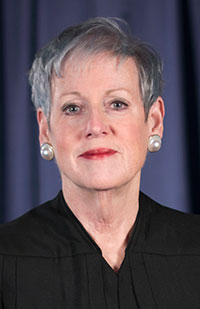Chief Justice O’Connor Touts Benefits of Broadcasting Arguments to National Press Club

Ohio Supreme Court Chief Justice Maureen O'Connor.

Ohio Supreme Court Chief Justice Maureen O'Connor.
Ohio Supreme Court Chief Justice Maureen O’Connor today appeared on a panel at the National Press Club and once again encouraged the U.S. Supreme Court to allow cameras in its courtroom.
Reiterating sentiments she first made after the March 2012 Affordable Care Act arguments, Chief Justice O’Connor said three reasons typically used to oppose broadcasting oral arguments can be easily refuted.
- Initial speculation that “grandstanding” would occur during arguments has been unfounded, she said, citing the Ohio Supreme Court’s successful experience of broadcasting oral arguments for 10 years.
- The “public won’t understand” argument is off the mark, because it misses the larger point of the need to foster greater public understanding about how courts work. Plus, she said, “because of a lack of cameras, the public is forced to process its information about the court through the filter of the media because there is no other direct option available.”
- Broadcasting live U.S. Supreme Court cases in their entirety would also serve to lend greater transparency to the judicial branch. “Justices are not ‘ivory towered’ nor should they be,” she said. “The American public is as entitled to know who sits on the Supreme Court as they are entitled to know their local council member or mayor. And they are entitled to see them in action.”
Chief Justice O’Connor also noted the limitations in the number of seats in the U.S. Supreme Court gallery and the dominant influence of video on how the public processes information as additional reasons to open the courtroom doors via technology.
“Historically, courthouses served as the center of our communities, from the Colonial times forward,” Chief Justice O’Connor said. “Obviously, we can’t rely on everyone going down to the courthouse any longer. But there’s a better option available now – by broadcasting court sessions live on TV to whomever wants to tune in.”
Chief Justice O’Connor was joined on the panel by Judge Ken Starr, president of Baylor University and former U.S. solicitor general; Neal Katyal, Georgetown Law professor and former acting U.S. solicitor general; Alan Morrison, George Washington Law associate dean; and Pete Williams, NBC News justice correspondent. Tony Mauro, U.S. Supreme Court correspondent for the National Law Journal, served as moderator.
View her speech and the panel discussion on “Today’s Supreme Court: Tradition vs. Technology and Transparency,”.


